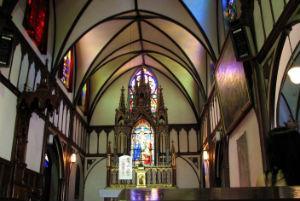 Within a sound project an essential element will always be acoustics, so in this edition we give you some recommendations from experts on developments of this type in religious enclosures, such as churches, temples and prayer centers.
Within a sound project an essential element will always be acoustics, so in this edition we give you some recommendations from experts on developments of this type in religious enclosures, such as churches, temples and prayer centers.
By Santiago Jaramillo H.
According to Juan Felipe Volverás, support engineer of the Colombian company Acústica Integrada, the main factor that must be taken into account when installing an audio system in any type of enclosure at a professional level, is the reverberation time as a basis for calculation and estimation of other factors such as the intelligibility of the word, clarity of the word and music, intimacy, among others.
"The reverberation time is that time it takes for the sound inside an enclosure to be attenuated, in approximately 60db, once the sound source is turned off. This factor is mainly dependent on the geometry of the enclosure and the materials that constitute it: walls, floor, ceiling, etc. The sound generated is reflected on these surfaces and the sensation of perceiving the message repeatedly is created until it is completely attenuated, "says the engineer Volverás.
Likewise, the representative of Acústica Integrada, affirms that in religious enclosures such as churches, temples and prayer centers, the time of reverberation plays an important role in defining the characteristics of the message transmitted by the speaker.
"The characteristic high-rise ceilings, vaults and arches that are present in a church, added to materials such as marble, brick and glass windows create sound phenomena such as focuses and echoes that manifest themselves in a time of high reverberation. These factors give certain characteristics to the message of the speaker that allows to be heard at any point of the enclosure with a touch of sublimity due to the amount of reflections it suffers and the resulting 'repetitions' of the message perceived by the listener, "ponders our guest.
On the other hand, Nelson Canter, representative of the company Soundesign Ltda., complements the above, highlighting that in a space of this type, the biggest challenge for an audio system is acoustics, because always in these enclosures the reverberation becomes a difficult element to control and this prevents the message from being intelligible.
He also maintains that "it is important that the direct sound reaches the ears of the listener first, so it is recommended to include a greater number of speakers of lower power, that is, contrary to other enclosures where one or two high-power speakers can be included to cover a greater area of the enclosure, in this case a distribution must be made including a greater number of speakers, also place them at the lowest possible height. All in order to excite the reverberation of the enclosure to a minimum."
Meanwhile, Alejandro Bidondo, representative of the Sound Engineering company emphasizes that "this is not an easy task, since it fails as the reverberation time (RT60) and / or the sound level of background noise increase. Given the diversity of possible sound sources, these acoustic properties do not depend on the sound system to be installed, but on the isolation to the external noise that the temple has and the interior coatings that establish the reverberation time."
Research and innovation
With regard to research, innovation and the latest trends in professional audio and acoustic systems to have optimal sound conditions in this type of enclosures, Juan Felipe Volverás emphasizes that currently audio companies in the professional field are aware that the performance of any audio system, regardless of its quality, price or features, depends largely on the place or enclosure where it is used.
"Most systems go through a calibration process that optimizes their characteristics based on the acoustic parameters of the enclosure, among these: reverberation time, inter-arterial cross-correlation, signal-noise ratio, early reflections, among others. Some of the newest systems incorporate microphones that measure the acoustic response of the enclosure and modify, through digital processes and DSP (digital signal processing) algorithms, the parameters of the reproduced signal".
An example of this can be evidenced, according to Voleverás, if very high reverberation times are perceived and it is assumed that the place is intended for conferences and oral presentations, the reverberation time of the signal and certain equalization parameters are digitally controlled, obtaining a more faithful reproduction of the signal that is captured live and guaranteeing the intelligibility of the spoken message.
It also warns that systems with coverage control are used when it is of special importance to delimit a sound area or audience area achieving a better performance of each speaker.
"In terms of acoustics, the interventions that allow optimizing the performance of an enclosure that incorporate electroacoustic reinforcement systems (audio) such as diffusion and absorption systems, are some of the basic parameters in architectural acoustics and define the performance of an enclosure or space", clarifies the representative of Integrated Acoustics.
Our guest also explains that the development around these elements has brought concepts such as variable acoustics, with which it is possible to physically modify the acoustic characteristics of the enclosures and directly parameters such as reverberation time, intelligibility of the word, clarity, among other factors.
Juan Felipe Volverás also notes that these systems have been widely used in Christian churches and congregation centers, in Catholic temples and traditional churches, on the other hand, it is more limited, especially those of an acoustic type, since many of these systems propose an aesthetic modification of the spaces or incorporate elements alien to the nature of the place, In addition, the acoustics of these temples are unique and in many cases have been so well achieved by large architectural designs that a considerable acoustic modification is not considered.
On the other hand, the representative of the company Soundesign Ltda., explains that "there is already technology that allows either adding or changing acoustic characteristics of an enclosure, a clear sample was presented in InfoComm by the company Meyer Sound with the Constellation system, which from an arrangement of microphones and speakers manages to add to any space the acoustics we want, In addition to this, some time ago manufacturers created Line Array type speakers or that behave as such for this type of applications, examples of this the Bose MA12, Community with the Entasys, among others. "
Independent of the above, and knowing that the different sound sources to be reproduced within the temples require different types of sound fields, Alejando Bidondo points out that "it is possible to define them as multipurpose enclosures. For the correct functioning of these it is advisable to use electronic acoustics in them. This system allows the establishment of different sound fields, with different reverberation times and distribution of sound reflections, programmable by the user, interchangeable at the touch of a key."
Acoustic challenges
With our guests we also wanted to talk about the main challenges posed by the use of electroacoustic systems in spaces such as temples and churches, before this question Juan Felipe Volverás indicates that "the most important thing is to ensure that the message is taken to each point of the space without losses or distortions of it. Each listener must record the message in its entirety and be able to understand or interpret what the speaker wants to express. This premise is the starting point of many acoustic designs not only in temples and churches, but widely used in any enclosure where there is a sound source, a message and a listener."
Nelson Canter, for his part, maintains that "it is difficult only with sound systems to make a system work well in an enclosure of this type, most of the time it is necessary to intervene the space by adding absorbent materials to floors ceilings and walls, all in order to reduce the reverberation time of the place, this in turn interferes with the aesthetics of the enclosure, which often becomes a problem."
Bidondo, meanwhile, explains that it is decisive to choose a good geometric shape for the temple. With a useful surface that can accommodate the expected number of seats, with architectural forms that do not unnecessarily complicate the subsequent acoustic and electroacoustic solutions and an appropriate height that gives importance and magnificence to the pulpit, stage and / or stage.
"Define whether electronic acoustics will be applied to prepare the room from the beginning, without subsequent budgetary shocks. And fundamentally work as a team, together with architects and builders, being all aware of what is important and necessary in each resolution to be taken. Although the number of variables and decisions to be made are innumerable, the above would establish some clear foundations to work for customer satisfaction, "says the representative of the sound engineering company.
General recommendations
Among the recommendations made by our guests, Canter notes that it is important to always contact qualified personnel, who have enough experience to make reverberation calculations of the place and simulations of the systems to be implemented, since a very good system in an enclosure with high reverberation time can behave the same or worse than a low quality system.
In the same way, Volverás agrees that the main recommendation is to consult experts, as far as possible from an acoustic consulting firm, since you must be aware of the importance of this aspect in any enclosure or space and that the performance of the audio system depends largely on it.












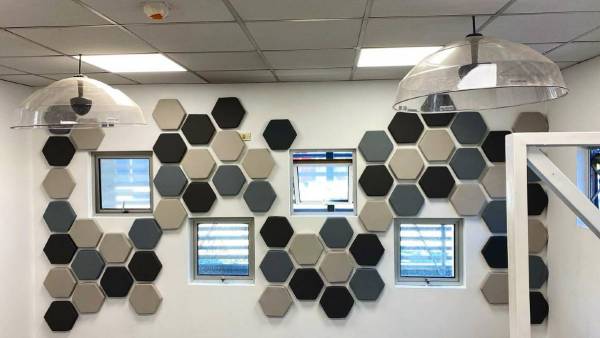
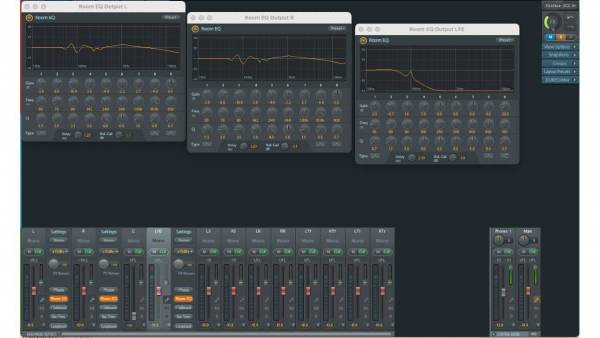
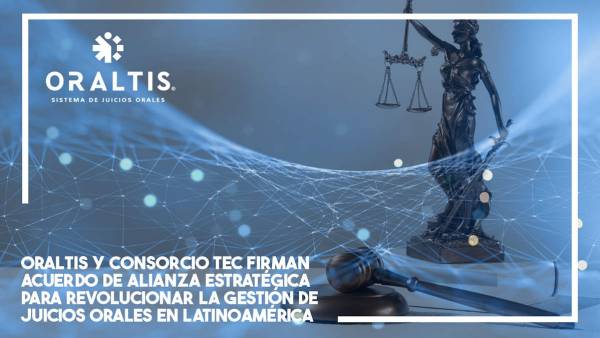
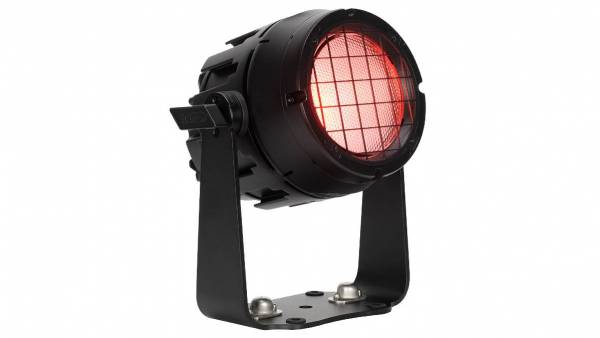










Leave your comment